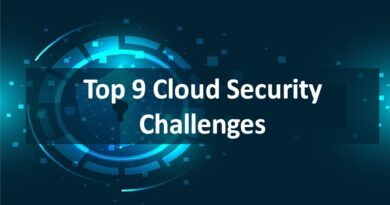Securing the data ecosystem
Organizations are often pressured to choose how to prioritize what is essential in terms of data management. Equally as often, they make rash decisions to comply with industry and regulatory standards. Some prioritize concern with cybersecurity threats and data leaks rather than cost efficiency. Many do not know that data management can protect against cyberattacks while being costeffective. The growth of big data in the digital world is extraordinary. Developing an effective data management strategy is key to securing your organization’s data ecosystem.
Data management can seem difficult due to the amount of data generated daily. This is not an easy task, but smart management technologies and data management best practices can help your organization avoid the consequences of poor data management leading to high costs. high cost and vulnerable to cyber attacks.
Understanding ROT data
There are three types of data: redundant, obsolete, and trivial data, also known as ROT data. The more ROT data a company has, the greater its risk of falling victim to a cyber attack. Businesses can reduce risk and reduce costs by understanding their ROT data.
Redundancy often occurs because we try to save multiple copies of the same data set because we are told it is best to keep everything. Outdated data is exactly: data that is outdated and no longer relevant. Mediocre data is data that is no longer useful and takes up space on the server and slows down processing. Organizations can solve this problem by knowing what data should be kept, deleted, or sorted.
Another challenge that comes with ROT data is that data storage companies operate on the condition that they retain the data and ultimately store it in the cloud. While the cloud seems to be a cost-effective solution, since the cost per gigabyte is so low, ROT data quickly adds up to monthly storage fees. To meet this, companies are buying disk after disk to support this growth, but within 5 years they are running out of space and have accumulated a large amount of disks.
The path to securing your data
First, organizations need to determine what data should be kept, whether it is necessary to conduct their business or to meet corporate compliance regimes . For example, financial data for an SOX audit should be kept for seven years. In contrast, GDP regulations in Europe stipulate that user data should be deleted as soon as it is no longer needed.
You can save your organization large sums of money with cost-effective and sophisticated data storage methods that manage unstructured data. The door is also open to data being used as a critical business asset that can be easily exploited and used for beneficial purposes. For some companies, key files or archives of certain sensitive data must be kept as long as they cannot be copied or accessed by unauthorized actions.
In-depth monitoring and authorization of security events is also good practice. This helps to identify access control measures that are extremely helpful in securing corporate data and gives data stakeholders an idea of upcoming threats, data vulnerabilities, etc. potential or referred and potential privacy or security issues.
Organizations can quickly identify and resolve issues by establishing automated data discovery policies to follow applicable compliance mode protocols. A real-life example of this is sharing medical data without a signed form or without deleting account information when it is no longer needed.
Organizations should not turn a blind eye to growing cybersecurity threats and data leaks because they are unaware of cost-effective data management solutions. Businesses need to be aware of data management strategies that help define data and organize what needs to be kept, deleted, or sorted. In doing so, we are changing the digital world by securing the data ecosystem. This not only helps organizations create value, but is also a key factor in reducing costs and preventing cyberattacks.




